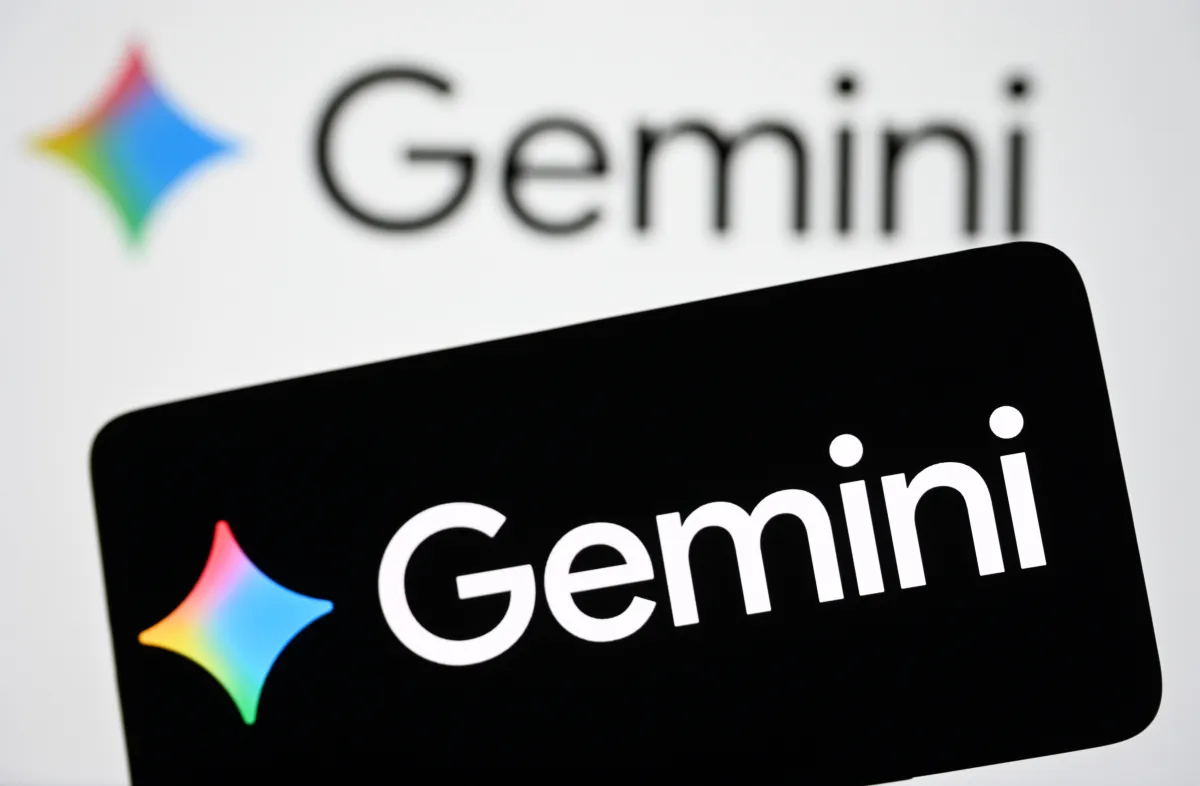Google’s Gemini AI app could soon be getting a big makeover
After the success of OpenAI’s video editing app Sora, now at the top of the U.S. App Store, Google may be looking to give its Gemini AI app a more visually focused revamp. The company is seemingly experimenting with a new user interface that would shift the app from having a chatbot-style look and feel to one offering a scrollable feed with suggested prompts accompanied by eye-catching photos.
Sarah Perez
Published on October 3, 2025 · Updated December 14, 2025

Gemini Android App Update Reveals New Home Screen Design & Nano Banana Features
The changes were spotted in a recent version of the Gemini Android app by the news site Android Authority, though they are not yet live for all users. A reverse engineer examining the app’s code enabled the new home screen layout. Shortcut buttons like “Create Image” and “Deep Research” were moved higher, followed by a scrollable feed underneath.
Reached for comment, a Google spokesperson said there’s no announcement to be made “just yet.”
In the examples shown, prompts suggested creative things to do with your photos, such as “Teleport me to deep space,” “Give me a vintage or grunge look,” or “Turn my drawing into a storybook.” Other prompts appeared over colorful backgrounds and offered suggestions like “Brainstorm out loud with Live” or “Send me a daily news roundup.”

Image Credits: Android Authority
The idea behind these changes seems to be reducing friction: rather than leaving users at a blank screen, Gemini now gives them actionable prompts and shortcuts to explore features. The revamp also aims to make the app more visually engaging.
Introducing Nano Banana (Gemini 2.5 Flash Image)
Alongside UI tweaks, Gemini’s image-editing capabilities have received a major upgrade under the codename Nano Banana. Officially, Google calls it Gemini 2.5 Flash Image. Nano Banana was tested anonymously on benchmarking platforms like LMArena before being publicly revealed. Google’s official announcement details that the model is available via the Gemini app, Gemini API, Google AI Studio, and Vertex AI. (Note: every edited or generated image includes visible and invisible watermarks to mark AI origin.)
Some of the key features include:
- Character consistency: Retains the likeness of people or objects across multiple edits so they don’t morph unintentionally. (e.g., change outfit but still look like yourself)
- Multi-image fusion: Blend two or more images together into seamless compositions — for example, combine a pet and a scenery shot. (Gemini API docs)
- Conversational editing: Make targeted modifications with natural language prompts. For instance, “blur the background,” “remove an object,” or “change clothing color.”
Google says that since integrating Nano Banana, the Gemini app saw significant user growth. According to reports, it gained over 10 million new users and has processed more than 200 million image edits. (Source: Android Central)
Early hands-on reviews are mixed. In Android Authority’s test, they noted that while the tool can meaningfully transform scenes (e.g. “turn me into a matador”), the facial resemblance sometimes drifted. In one example, a user looked nothing like their original photo. (“I don’t look anything like that,” they quipped.) (Source: Android Authority)
Use Cases & Creative Possibilities
What can users do with Nano Banana? Here are a few examples:
- Virtual try-on experiences: Fuse outfit images with selfies—see how clothing looks on you without physically wearing it
- Blending landscapes or objects: Merge animals, people, textures, or backgrounds into new scenes
- Storybook editing: Turn illustrations or photos into graphic-novel style scenes with consistent characters
- Creative campaigns: E-commerce teams can generate product variants or staged shots efficiently
These capabilities can also enhance workflows in design, marketing, storytelling, and content creation — especially for small teams that can benefit from prompt-based image editing vs. large production pipelines.
Challenges & Limitations
That said, the model isn't perfect yet. Observed issues include:
- Facial distortions or misalignment when making radical edits
- Prompt ambiguity — vague instructions can lead to unexpected results
- Access & reliability — during high demand, features may lag or be throttled
Some users have reported that while the model is powerful, it sometimes “misses” critical details of the original image — especially when editing across multiple stages.
Competition & Market Impact
The introduction of Nano Banana puts Google in a strong position to challenge competitors such as OpenAI’s image models and third-party AI editing tools. While ChatGPT’s interface remains minimalist, Gemini now offers both conversational AI and multimedia editing capabilities in a unified app.
By combining generative and editing functions in one environment, Google is signaling that it sees visual AI as the next front in the consumer AI wars.

Image Credits: Android Authority
Recommended Articles
Fresh insights from our blog

Ordering an App: A Professional Roadmap for Business Clients
This article is a practical roadmap for business owners who want to order an app without being trapped by vague quotes, unrealistic timeline...

How to Do Redirects Right? A Complete SEO Guide
One wrong redirect can quietly kill your traffic. Learn what a proper redirect is, when to use 301 vs 302, and how to protect your rankings...

Website Relaunch Without Losing Rankings | Full Guide
Planning a website relaunch but afraid of dropping in Google? This hands-on guide walks you through every step before, during and after the...

Realistic Website Build Timeline: From 2-Week Promises to a True 4–12 Week Schedule
Almost every agency dodges the question “How long does it take to build a website?” or throws out a pretty number to hook you. This article...

Before You Order a Website: How Much Should You Really Pay – and What Should You Expect from a Professional Agency?
If you’ve received several quotes for your new website and the different numbers are confusing you, this article is your roadmap. Step by st...

